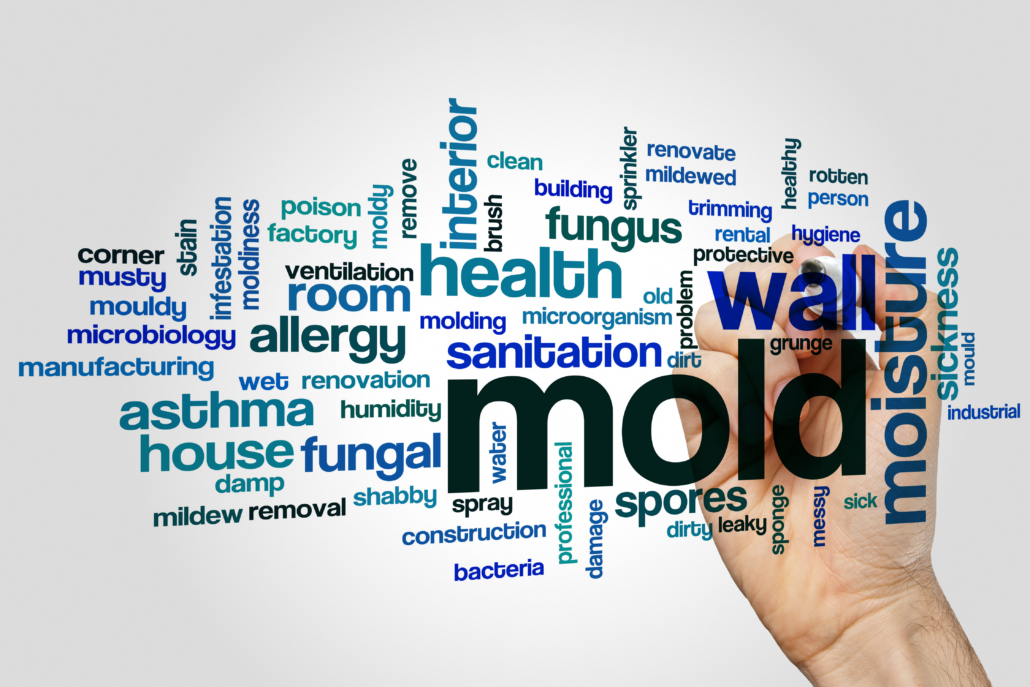Dennis@Beyondthebeams.com
Mold Assessments
What Is Mold?
Mold is microscopic fungi that live on plant or animal matter. It can be found indoors and outdoors and are part of our natural environment. They play an important role in the environment by breaking down and digesting organic material. Also called fungi or mildew, molds are neither plants nor animals; they are part of the kingdom Fungi.
Mold can multiply by producing microscopic spores similar to the seeds produced by plants. Many spores are so small they easily float through the air and can be carried for great distances by even the gentlest breezes.
Mold comes in many colors including white. “Black mold” is not a species or specific kind of mold, and neither is “toxic mold.” Sometimes the news media use the terms “toxic mold” and “black mold” to refer to molds that may produce mycotoxins or for a specific mold, Stachybotrys chartarum. Molds that produce mycotoxins are often referred to as toxigenic fungi.
Mold is not usually a problem indoors — unless mold spores land on a wet or damp spot and begin growing. As molds grow they digest whatever they are growing on. Unchecked mold growth can damage buildings and furnishings; molds can rot wood, damage drywall, and eventually cause structural damage to buildings. Mold can cause cosmetic damage, such as stains, to furnishings. The potential human health effects of mold are also a concern. It is important, therefore, to prevent mold from growing indoors.
How Does Mold Affect People?
Exposure to damp and moldy environments may cause a variety of health effects, or none at all. Some people are sensitive to molds. For these people, exposure to molds can lead to symptoms such as stuffy nose, wheezing, and red or itchy eyes, or skin. Some people, such as those with allergies to molds or with asthma, may have more intense reactions. Severe reactions may occur among workers exposed to large amounts of molds in occupational settings, such as farmers working around moldy hay. Severe reactions may include fever and shortness of breath.
- Sneezing
- Runny Nose
- Red Eyes
- Skin Rashes
- Dizziness
- Headaches
In 2004 the Institute of Medicine (IOM) found there was sufficient evidence to link indoor exposure to mold with upper respiratory tract symptoms, cough, and wheeze in otherwise healthy people; with asthma symptoms in people with asthma; and with hypersensitivity pneumonitis in individuals susceptible to that immune-mediated condition.
In 2009, the World Health Organization issued additional guidance, the WHO Guidelines for Indoor Air Quality: Dampness and Mould pdf icon[PDF – 2.65 MB]external icon {Summary} pdf icon[PDF – 167 KB]. Other recent studies have suggested a potential link of early mold exposure to development of asthma in some children, particularly among children who may be genetically susceptible to asthma development, and that selected interventions that improve housing conditions can reduce morbidity from asthma and respiratory allergies.
A link between other adverse health effects, such as acute idiopathic pulmonary hemorrhage among infants, memory loss, or lethargy, and molds, including the mold Stachybotrys chartarum has not been proven. Further studies are needed to find out what causes acute idiopathic hemorrhage and other adverse health effects.
There is no blood test for mold. Some physicians can do allergy testing for possible allergies to mold, but no clinically proven tests can pinpoint when or where a particular mold exposure took place.
Mold Assessment Process
- Full Visual Inspection Of Entire Property
- Identification of Red Flag Areas (Excess Moisture, Water Intrusion, Visible Mold Growth)
- Air Samples: Determines Whether Elevated Mold Levels Exist or Not
- Surface Sample (additional if wanted)
- Lab Results from Accredited Laboratory
- Detailed Report with Protocol For Mold Remediation (If Necessary)
When And Why Hire Us
- Visible Growth
- Health Issues
- Water Leaks
- Real Estate Transaction
- Strange Smell

